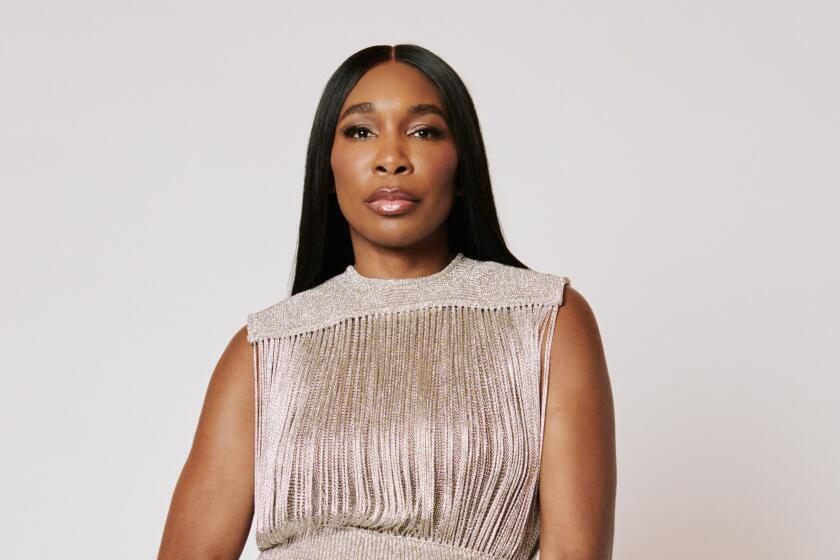Ellen Hopkins talks about âTiltâ and the power of books...
Ellen Hopkins has made a career out of mining teen misfortune. Whether itâs methamphetamine addiction or domestic abuse, perfectionism or teen pregnancy, each of the authorâs nine novels for young adults has been a New York Times bestseller, including her latest, âTilt,â released earlier this month. The book is the teen spin-off to Hopkinsâ adult novel, âTriangles,â which tracked the troubled lives of various parents navigating their midlife crises. âTiltâ tells the story from their childrenâs points of view to show the effect of parentsâ decisions and neglect. We caught up with the author to talk about her newest bestseller and her unique form of storytelling. All of Hopkinsâ young adult novels are written in free verse.
Jacket Copy: You have 10 published novels, nine of which are written for teens, including âTilt.â But âTiltâ is different in that itâs almost a Rashomon-style retelling of your adult novel, âTriangles.â Why did you want to write the teen spin-off of that story?
Ellen Hopkins: In writing âTriangles,â those three women had teens, so the teen stories became interesting to me too. Writing the adult novel, the adult stories were the heart of the book. But it became an interesting experiment because parents are always trying to figure out what their teens are thinking and teens are always trying to figure out what their parents are thinking.
JC: What are the parents doing in âTrianglesâ that so adversely affects their kids in âTilt?â
EH: One of the moms is having an affair, so sheâs all tied up in that and not paying attention to what her daughterâs doing. HIV we talk about some because a parent finds the boyfriendâs bottle of anti-retrovirals and sheâs like, âDoes my kid have AIDS?â A big focus in both books is the little girl whoâs dying of spinal muscular atrophy, so her failing days and her death really affect the three characters very profoundly. The idea that life could end this young or this quickly, that touches these three kids very deeply, so their decisions end up being changed by her death too.
JC: In âTilt,â the three characters are forced to deal with death, teen pregnancy and HIV, among other things. Writing about such hard-core topics, are you ever accused of being sensationalist?
EH: Iâm not. First of all, I have a 15-year-old at home, so Iâm experiencing teen drama on a daily basis at home. But I also do a lot of high school visits, so Iâm out among high school kids. Through social media, Iâm talking with teens all the time in hundreds of messages a day, so I understand what theyâre going through. What Iâm writing about, itâs all there. Itâs not stuff Iâm making up to be sensationalistic.
JC: You are, obviously, an adult. How do you tap into teensâ emotions in a way that reads as authentic?
EH: I have a respect for teens, not that everything they do makes me happy. Itâs really necessary to write contemporary young adult fiction. Itâs not about teaching them lessons. Itâs not about dissecting their psyches. Itâs about respect. To have that respect for them, to listen to what theyâre saying, Iâve become almost like a Dear Abby. Itâs like youâre the mom. They canât tell their moms, but they tell me. Itâs weird and sometimes depressing and sometimes uplifting too because I get both sides: kids whoâve come through and made it out the other side and kids who donât have these problems in their lives but who want to know why other kids are doing what theyâre doing.
JC: Why do you write your books as poetry instead of prose?
EH: My first novel, âCrank,â was loosely based on a very close-to-me story about my daughterâs meth addiction. I wanted to write that book first person from her point of view, and when I wrote it in prose, she had just gone to prison, and the voice was angry and it was me. Iâve been writing poetry forever, so it struck me to try combining verse and fiction. For that story specifically, it worked really, really well. I continue with it because what verse does when you combine it with fiction is it takes away enough of the extraneous description and language that it puts you on the page, so itâs more like living the story than being told a story.
JC: Itâs incredible that you not only had that experience with your daughter but were willing to open up and write about it.
EH: Once kids know Iâm willing to share my story, I think they kind of open up themselves. I just did a school event, and this girl waited until everybody left and came up to me and said, âI think itâs fate you came here because I just tried meth for the first time three days ago, and Iâm going to stop.â She had a horrible life, but in our discussion, she really wanted not to. She just needed somebody to tell her she could make it out the other side. She just didnât have that support system. A book can do that if you donât have that support system. Thatâs the thing about books. Kids have these questions, and books like mine answer those questions without them having to go out and try and experiment and ask them of the wrong people. I absolutely think books save lives.
ALSO:
Review: âPerfectâ by Ellen Hopkins
Most young adult book buyers are not young adults
More to Read
Sign up for our Book Club newsletter
Get the latest news, events and more from the Los Angeles Times Book Club, and help us get L.A. reading and talking.
You may occasionally receive promotional content from the Los Angeles Times.







